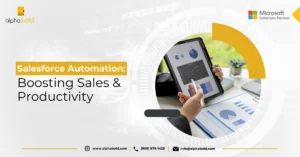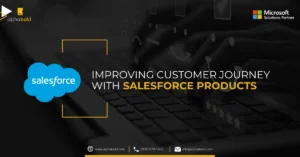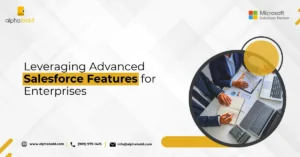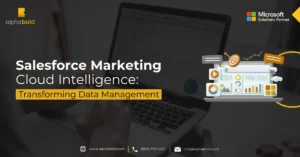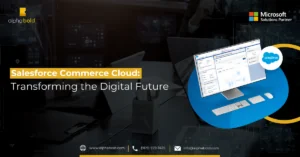Introduction
In this blog, we’ll delve into the ultimate Salesforce implementation checklist tailored specifically for CIOs, providing a step-by-step blueprint for success.
Implementing Salesforce is a pivotal step for any organization striving to streamline its operations, enhance customer relationships, and drive growth. As a CIO, overseeing a Salesforce implementation requires meticulous planning, strategic alignment, and effective execution. To ensure a seamless transition and maximize the potential of Salesforce, having a comprehensive checklist is essential.
Salesforce Implementation: Pre-Installation Planning:
1. Define Your Goals:
Before setting up Salesforce and any CRM system, it’s important to be clear on what you’re hoping to achieve. Here are some questions to help you figure this out:
- What are you hoping to get out of using Salesforce? What problems do you want to fix?
- How exactly will Salesforce help you solve these issues?
- Make sure your goals are realistic and achievable, and that you can track your progress.
A helpful tool for setting goals is the SMART framework. It stands for Specific, Measurable, Achievable, Relevant, and Time-bound. It ensures your goals are clear, well-defined, and attainable within a set timeframe.
The best way to break down specific project goals into manageable, cross-departmental implementation and measurement chunks is to follow this framework. Work closely with executive leadership to ensure that the Salesforce implementation strategy is in sync with the company’s vision for growth and innovation.
2. Executive Sponsorship:
3. Assemble your team:
4. Needs Assessment:
5. Partner Selection:
6. Project Planning and Timeline:
1. Define Project Goals and Scope:
- Business Needs: Identify the business problems the project aims to solve. Is it improving sales team efficiency, streamlining customer service, or gaining deeper customer insights?
- Salesforce Features: Determine the specific Salesforce functionalities (Sales Cloud, Service Cloud, Marketing Cloud, etc.) that will be implemented or customized.
- Deliverables: Clearly define the project’s expected outcomes, such as reports, dashboards, custom objects, or integrations with other systems.
- Scope Constraints: Set boundaries for the project to avoid scope creep. This includes limitations in budget, resources, and timeframe.
2. Break Down the Project:
- Work Breakdown Structure (WBS): Create a hierarchical breakdown of tasks, starting with major phases (e.g., Configuration, Development, Testing, Go-Live) and then further dividing them into smaller, more manageable activities.
- Task Descriptions: Clearly define each task, outlining its purpose, expected duration, and deliverables.
3. Estimate Task Durations and Resources:
- Time Estimates: For each task, consider complexity, team expertise, and potential dependencies when estimating timeframes. Historical data from similar projects or expert consultations can be helpful.
- Resource Allocation: Identify the team members or external resources needed for each task. Consider skillsets and availability.
4. Create a Project Timeline:
- Scheduling: Use a project management tool or a Gantt chart to schedule tasks based on durations, dependencies, and resource availability. Visualize the overall project timeframe and identify critical paths (sequences of tasks crucial for project completion).
- Milestones: Define key milestones throughout the project, like configuration completion, user training start date, and go-live target.
5. Refine and Communicate:
- Iteration: The initial plan is a starting point. Be prepared to refine it as you gather more information or encounter unforeseen challenges.
- Communication: Clearly communicate the project plan and timeline to all stakeholders, including team members, executives, and end-users. Regularly update them on progress and any adjustments.
7. Data Preparation and Migration:
Further Reading: Salesforce Automation: Boosting Sales & Productivity
Step into the Future with Exceptional Salesforce Capabilities
Take the first step towards a seamless digital transformation. Sign up for a Salesforce demonstration, and let us show you how to maximize efficiency, foster customer relationships, and boost your ROI with targeted Salesforce solutions.
Request a DemoSalesforce Implementation Phase: How to Go Live with Salesforce
1. Business Process Mapping:
2. Customization and Configuration:
Customize Salesforce to align with your organization’s specific workflows, processes, and preferences. Configure objects, fields, workflows, and automation rules to optimize productivity and efficiency across the board.
3. Integration Strategy:
4. User Training and Adoption:
5. Change Management:
Implement change management strategies to address resistance and foster a culture of adoption within the organization. Communicate changes transparently and proactively, emphasizing the benefits of Salesforce for individual users and the organization.
6. Governance and Security:
Establish robust governance policies and security measures to protect sensitive data and ensure compliance with regulatory requirements. Implement role-based access controls, encryption, and other security measures to safeguard your organization’s information assets.
7. Testing and Quality Assurance:
Conduct thorough testing of customizations, configurations, and integrations to identify and address any issues before going live. Perform user acceptance testing (UAT) to ensure that Salesforce meets the needs and expectations of end-users across the organization.
Post Implementation Phase
1. Go-Live and Post-Implementation Support:
2. Performance Monitoring and Optimization:
Further Reading: Salesforce Commerce Cloud: Transforming the Digital Future
Conclusion
Implementing Salesforce is a complex and multifaceted undertaking that requires careful planning, strategic alignment, and effective execution. By following this ultimate Salesforce implementation checklist tailored for CIOs, you can navigate the implementation process with confidence and set your organization up for success in the digital age. With Salesforce as a cornerstone of your digital transformation strategy, you can drive innovation, enhance customer experiences, and unlock new opportunities for growth and competitiveness in today’s dynamic business landscape.
Experience Salesforce with AlphaBOLD
As your trusted Salesforce implementation partner, AlphaBOLD is here to guide you every step of the way. From initial setup to ongoing support, contact us to arrange a demo session and start your journey towards digital excellence today. Let us help you leverage Salesforce to its full potential, ensuring your implementation is as effective and beneficial as possible.
Request a DemoExplore Recent Blog Posts



